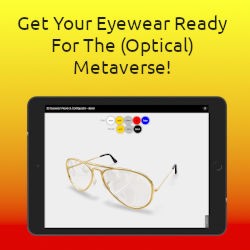Industry News
Optometry Australia Warns For The Damaging Effects of The Australian Sun
 Though the majority of Australians are aware of the SunSmart mantra, Slip-Slop-Slap-Seek, many are unaware that their eyes are just as supseptible to sunburn as their skin, and they should also be Slip-SlopSlap-Seek-Sliding a pair of sunglasses on to avoid sunburnt eyes.
Though the majority of Australians are aware of the SunSmart mantra, Slip-Slop-Slap-Seek, many are unaware that their eyes are just as supseptible to sunburn as their skin, and they should also be Slip-SlopSlap-Seek-Sliding a pair of sunglasses on to avoid sunburnt eyes.
While eye sunburn can be caused by direct ultraviolet light (UV) exposure from the sun, reflective light from various surfaces can also wreak havoc on Aussies’ eyes, potentially leading to conditions such as cataracts, pterygia, photokeratitis and macular degeneration.
Surfaces such as concrete can reflect 8-12 per cent of the sun’s UV rays, additionally, dry sand can reflect 15-18 per cent, water 25-30 per cent and grass 2-5 per cent .
Optometrist, Luke Arundel from Optometry Australia said, “In Australia, we are exposed to some of the highest levels of UV in the world and our eyes are at risk of developing issues when left unprotected over long periods of time. In the same way we protect and cover our skin, particularly in summer, the underlying sun-exposure risks to skin is the same for our eyes, however, our eyes are more sensitive to UV damage than our skin, so we need to protect them with sunglasses".
While UV radiation can still cause damage on cold and cloudy days, Mr Arundel says UV levels are intensified in summer and will continue to increase from now into the new year. “Not wearing quality shades in summer is like heading out on a sunny day and not wearing a hat and sunscreen. When there are options available which are both protective and fashionable, there is no excuse for taking the risk.”
Earlier this year, sunglasses standards came into effect which mandates all sunglasses protect users from UV radiation between 280 and 400 nanometres. The regulation will see sunnies classified by five categories, ranging from ‘fashion spectacles’ through to protective ‘sunglasses’ which highlights that not all ‘sunglasses’ are made equal.
“When looking for a new pair of sunglasses, make sure you look at the swing tag category number. A category three or four lens will not only reduce glare but will also protect you against the Australian sun’s harsh UV rays – what sunglasses are intended to do,” said Mr Arundel. Optometry Australia urges Australians of all ages to protect their eyes year-round when outdoors – particularly when UV levels are at their highest between 8am-10am [AEST] and 2pm-4pm [AEST].
“The Bureau of Meteorology recommends sun protection measures when the UV index is 3 or above. A broad brimmed hat can help block out UV rays, but there is nothing more important for your eyes than a pair of protective sunnies!” added Mr Arundel.
According to Cancer Council Australia, UV levels in Australia during the summer months can average between 12-14 and can reach 16-17 in northern states. UV values above 11 are considered extreme4 and Australians should remain shaded and protected during peak months.


